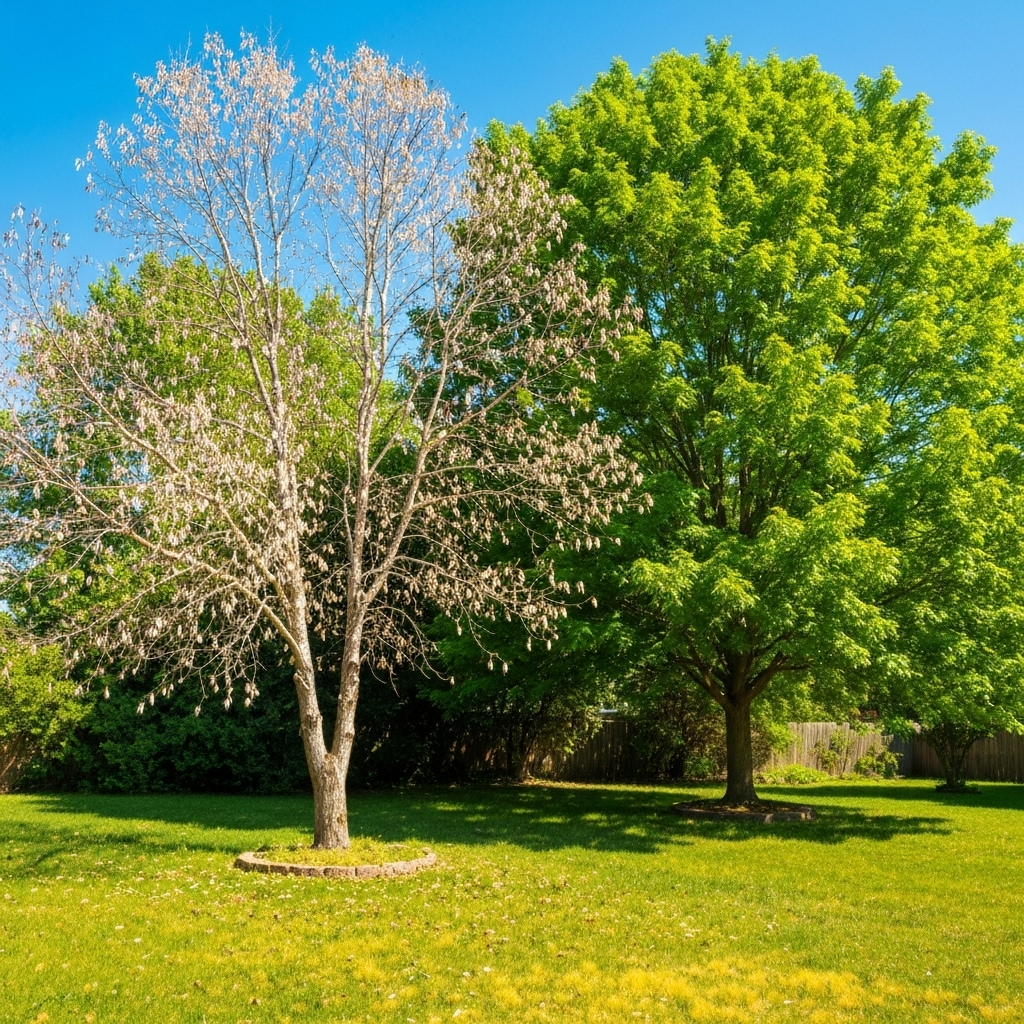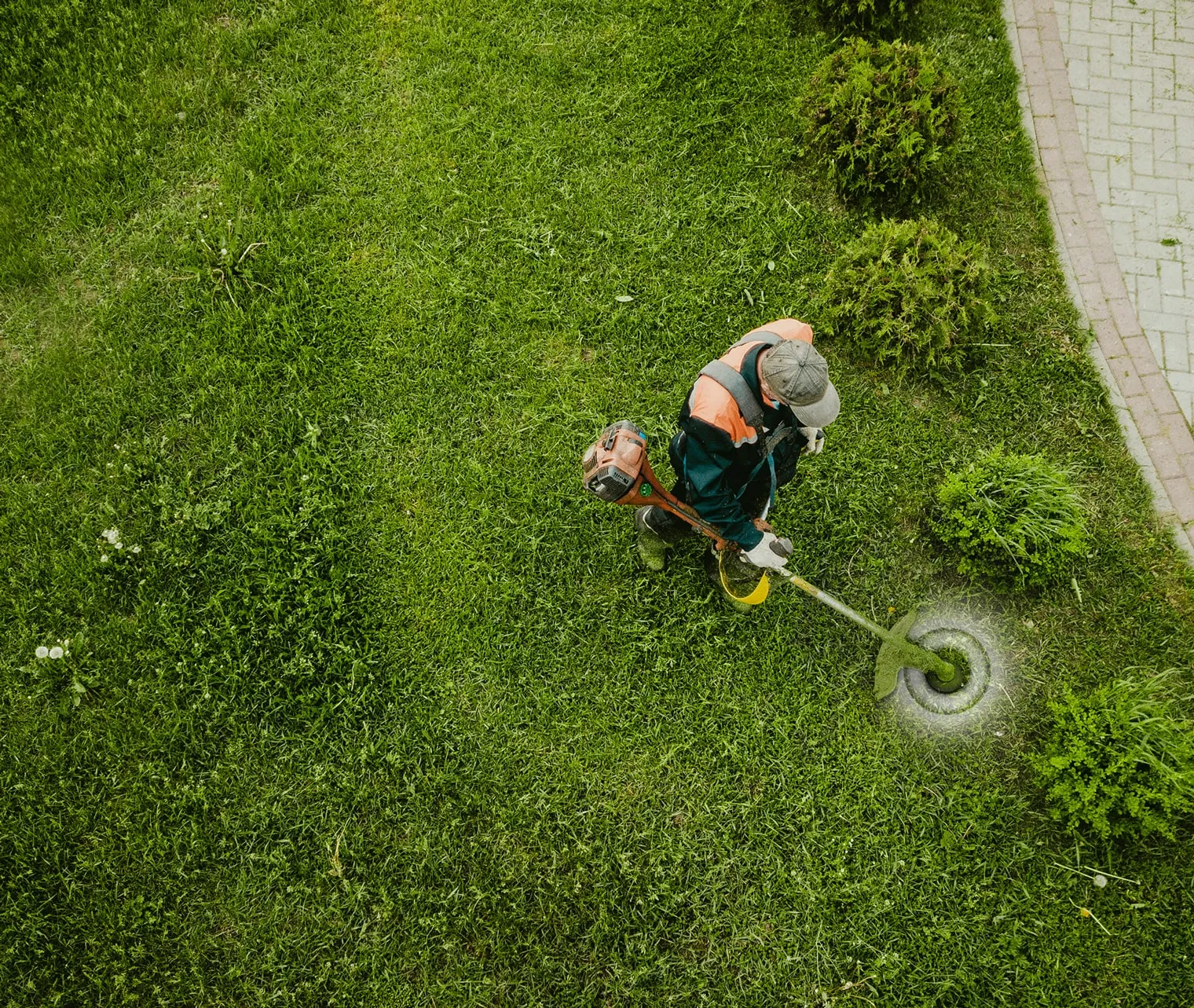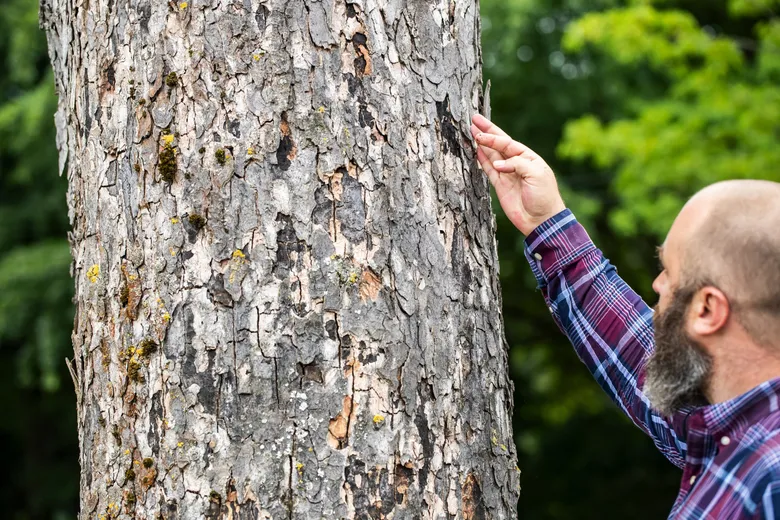Trees are more than just part of the scenery; they’re living investments that enhance your property, contribute to a healthier environment, and provide invaluable shade and beauty. Just like any other valuable asset, they require proper care and attention to thrive. This comprehensive guide from TreesRX will walk you through everything you need to know about proactive tree care, from seasonal maintenance to identifying when professional help is essential.
Why Healthy Trees Matter
Investing in the care of your trees isn’t just about aesthetics; it’s about safeguarding your property, promoting environmental well-being, and ensuring safety. Healthy trees contribute significantly to your overall quality of life.
Boost Your Property’s Beauty & Value
Well-maintained trees instantly boost your property’s curb appeal, making it more inviting and desirable. A lush, vibrant canopy can increase property value by thousands of dollars, making tree care a smart financial decision for homeowners.
Trees: Our Green Superheroes (Environmental Perks)
Trees are natural air purifiers, absorbing carbon dioxide and releasing oxygen. They provide crucial shade, reducing energy costs in warmer months, and offer vital habitats for local wildlife. Their roots help prevent soil erosion, contributing to better vegetation management and a healthier ecosystem.
Protect Your Investment, Prevent Headaches
Neglecting tree health can lead to costly problems down the line, from extensive storm damage to irreversible disease. Proactive tree care helps prevent these headaches, protecting your valuable investment.
Safety First: Keeping Your Property Secure
Unhealthy or unstable trees pose significant safety risks. Falling branches or entire trees can cause severe property damage or even injury. Regular tree trimming and inspections are crucial for maintaining safety standards around your home or business.
Get to Know Your Trees
Effective tree care begins with understanding the basics of tree biology and the specific needs of different species.
Different Trees, Different Needs (Deciduous vs. Evergreen)
Understanding whether your trees are deciduous (lose leaves in fall) or evergreen (retain leaves year-round) is fundamental. Deciduous trees often require dormant-season pruning, while evergreens might need more consistent trimming to maintain their shape and density.
Common Tree Species You Might See
From majestic oaks to graceful maples, or resilient palms, each species has unique requirements for optimal tree health. Familiarizing yourself with the common trees in your area will inform your tree care strategy.
Tree Basics: Roots, Trunk, Branches & More
A tree’s anatomy – its extensive root system, sturdy trunk, branching limbs, and leafy canopy – all play interconnected roles. Issues in one area can impact the entire tree, highlighting the importance of holistic tree care. Understanding these basics helps you spot signs of trouble early.
Tree Care Through the Seasons
Effective tree care is a year-round commitment. Each season brings specific challenges and opportunities for nurturing your trees.
Spring: Time for Growth & Renewal
As temperatures rise, spring is a period of rapid growth.
-
Feeding your trees: This is an ideal time for fertilization to support new growth.
-
First trims for health: Light pruning to remove any dead or weak branches from winter can encourage healthy development.
-
Checking for pests: Keep an eye out for early signs of common pests that emerge with warmer weather.
-
Mulching magic: Applying a layer of mulch around the base of your trees helps retain moisture, regulate soil temperature, and prevent soil compaction.
Summer: Thriving in the Heat
Summer heat can be stressful for trees.
-
Smart watering tips: Consistent, deep irrigation is vital, especially for young trees or during dry spells. Avoid frequent, shallow watering.
-
Spotting stress & pests: Monitor for signs of drought stress (wilting leaves) or increased pest activity.
-
Light trimming for shape: Minor trimming can be done for aesthetics or to clear low-hanging branches, but extensive pruning is generally best avoided during peak growth.
Fall: Getting Ready for Winter
Fall is about preparing trees for dormancy and planting new ones.
-
Clearing fallen leaves: While beneficial as mulch, excessive leaf accumulation around the trunk can harbor pests and disease.
-
Winter prep (for young trees): Protecting young or vulnerable trees from frost can be crucial.
-
Final checks: Perform one last visual inspection for any lingering issues before winter sets in.
-
Best time to plant new trees: The cooler temperatures and increased rainfall make fall an optimal time for planting new trees, allowing roots to establish before spring.
Winter: Resting & Protecting
During dormancy, trees are less active but still require attention.
-
Guarding against the cold: For sensitive species, protecting them from harsh winter elements might involve wrapping trunks or providing windbreaks.
-
Shaping without leaves: This is an excellent time for structural pruning of deciduous trees, as their bare branches allow for clear visibility of their form.
-
Looking for storm damage: Winter storms, especially those involving ice or snow removal efforts, can cause significant damage, requiring prompt assessment.
Is Your Tree Asking for Help?
Recognizing the early warning signs of distress can save your tree. Don’t wait for a small problem to become a major issue.
Visible Cracks, Leans, or Splits
These are serious indicators of structural instability. A tree with significant cracks, leans, or splits could be a fall hazard and requires immediate attention from certified arborists.
Sick-Looking Leaves (Discolored, Wilting, Thin)
Changes in foliage color (yellowing, browning), wilting, or unusually sparse leaves often point to nutrient deficiencies, disease, or pest infestations. This is a clear sign that your tree health is compromised.
Pesky Pests & Unwanted Fungus
Visible insects, webs, sawdust, or fungal growths (mushrooms on the trunk or roots) are tell-tale signs of pest or disease problems. Early detection and intervention are key to effective vegetation management.
Dead Branches & Rotten Spots
Any dead branches within the canopy (deadwood) are a fall risk and indicate potential internal decay. Soft, spongy spots on the trunk or main limbs suggest rot, weakening the tree’s structure and potentially shortening its lifespan.
Worried About the Roots?
Exposed roots, roots circling the trunk (girdling roots), or mushrooms growing around the base can all signal root issues that impact the tree’s stability and nutrient uptake. Soil compaction can also severely impact root health.
After the Storm: What to Do Next
Following strong winds or storms, inspect your trees for broken limbs, leaning trunks, or exposed roots. Emergency tree services are often needed in these situations to ensure safety and prevent further damage.
DIY vs. Pro: When to Call the Experts
While some minor tree care tasks can be handled by homeowners, many require the expertise and equipment of professional tree care specialists.
Simple Tree Tasks You Can Do
You can safely handle basic tasks like watering, applying mulch, raking leaves from around the base, and very light pruning of small, accessible branches (less than an inch in diameter). Regular visual inspections are also a great DIY practice for maintaining tree health.
When to Ring an Arborist (It’s Serious Business!)
For anything beyond simple maintenance, it’s crucial to hire certified arborists. This includes:
-
Large tree removal (using specialized equipment like cranes and bucket trucks)
-
Complex pruning (especially for large limbs or near power lines)
-
Diagnosing and treating diseases or severe pest infestations
-
Stump grinding
-
Emergency tree removal after a storm
-
Any task requiring climbing or power tools beyond basic trimmers.
Don’t Risk It: Why DIY Can Be Dangerous
Attempting complex tree care or tree removal without proper training, equipment, and insurance can be extremely dangerous. The tree care industry reports numerous accidents involving inexperienced individuals. Improper pruning can also permanently damage your tree’s lifespan and structure.
Choosing the Right Tree Service (What to Look For)
When selecting a tree service, prioritize safety, expertise, and professionalism. Look for companies whose arborists are certified arborists by the International Society of Arboriculture (ISA). This certification signifies a high level of knowledge and adherence to best practices. Membership in organizations like the Tree Care Industry Association (TCIA) further indicates a commitment to safety standards and ethical practices within the tree care industry. Ensure they are fully insured and can provide references. To see how we measure up, learn Why Choose TreesRX for Your Tree Care Needs.
Everyday Tree Care Secrets
Beyond seasonal activities, these ongoing practices are vital for sustaining long-term tree health.
Smart Trimming for Stronger Trees
Proper pruning is an art and a science. It encourages healthy growth, removes dead or diseased wood, improves air circulation, and enhances the tree’s structural integrity. Incorrect trimming can severely harm a tree. For expert guidance and professional work, learn more about our Expert Tree Pruning & Trimming Services.
Feeding Your Tree from the Roots Up
Deep root fertilization provides essential nutrients directly to a tree’s root system, promoting vigorous growth and resilience against pests and diseases. This is particularly important in urban environments where trees may not get adequate natural nutrients due to soil compaction and hardscaping. Discover how we can nourish your trees with our Tree Fertilization & Nutrient Management.
Battling Bugs & Banish Disease
Early detection is critical for managing pests and diseases. Our arborists can accurately diagnose issues and implement targeted treatments to protect your trees. This proactive vegetation management approach is essential for preventing widespread problems. Get proactive and explore our Pest & Disease Control for Trees.
When a Tree Needs to Go (Removal & Stump Grinding)
Sometimes, despite the best efforts, a tree may need to be removed due to disease, significant damage, or safety concerns. Professional tree removal involves specialized equipment like cranes and bucket trucks to safely bring down large trees. Once the tree is removing, stump grinding can eliminate the unsightly remnants and prevent regrowth. For safe and efficient removal, consider our Safe Tree Removal & Stump Grinding Services.
Emergency Tree Help: We’re Here When You Need Us
Unexpected events like severe storms can leave behind damaged trees, posing immediate hazards. Our emergency tree services are available to quickly assess and mitigate risks, ensuring the safety of your property. When you need urgent assistance, trust our Emergency Tree Services.
Trust TreesRX for Your Tree Care Needs
At TreesRX, we are passionate about the health care and longevity of your trees. Our team of certified arborists is dedicated to providing the highest quality professional tree care services, adhering to the strictest safety standards and best practices in the tree care industry. We understand the nuances of urban forestry and how to ensure your trees thrive in any landscape, whether it’s a small residential yard or a large commercial property.
Our Promise: Healthy Trees, Happy Customers
We combine our deep knowledge of landscape architecture principles with practical, science-based tree care techniques to ensure optimal tree health and customer satisfaction. We are proud members of the TCIA and ISA, demonstrating our commitment to excellence.
Why We’re Your Local Tree Experts
Our experience, commitment to continuous learning, and state-of-the-art equipment—including bucket trucks and cranes for safe removing of trees—set us apart. We provide comprehensive solutions, from planting new trees to managing pests and diseases, and performing meticulous pruning and trimming.
Get Your Free Tree Care Consultation Today!
Don’t wait until a small issue becomes a big problem. Proactive tree care ensures the beauty, safety, and longevity of your trees. Contact TreesRX today for a free, no-obligation consultation. Let our arborists assess your trees and recommend the best practices for their continued well-being.
Your Top Tree Care Questions Answered
We understand you have questions about keeping your trees healthy. Here are some common ones we hear:
How much water does my tree really need?
It depends on the tree’s species, age, soil type, and current weather conditions. Generally, deep, infrequent irrigation is better than frequent, shallow watering. Young trees need more consistent moisture.
What's the best time for tree trimming?
For most deciduous trees, late fall to early spring (during dormancy) is ideal. For evergreens, light trimming can often be done year-round, but major pruning is best during dormancy or after new growth hardens off.
How can I tell if my tree is dying?
Signs include extensive deadwood, significant leaf loss outside of fall, discolored or wilting leaves, severe bark cracking or peeling, and fungal growth on the trunk or base. If you notice these, consult an arborist.
Can I cut down a big tree myself?
Absolutely not. Large tree removal is incredibly dangerous and should only be performed by insured professional tree care companies with the right equipment (e.g., cranes, bucket trucks) and expertise.
What's the typical cost for tree services?
Costs vary widely depending on the type of service, tree size, location, and complexity. We offer free estimates to give you an accurate quote for your specific needs.




